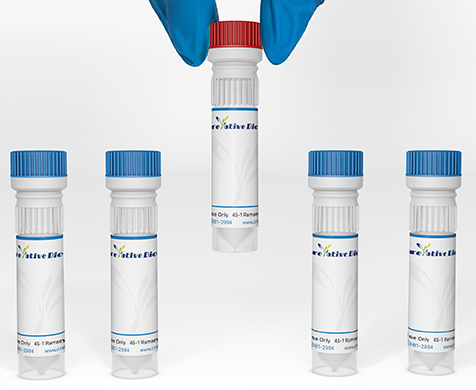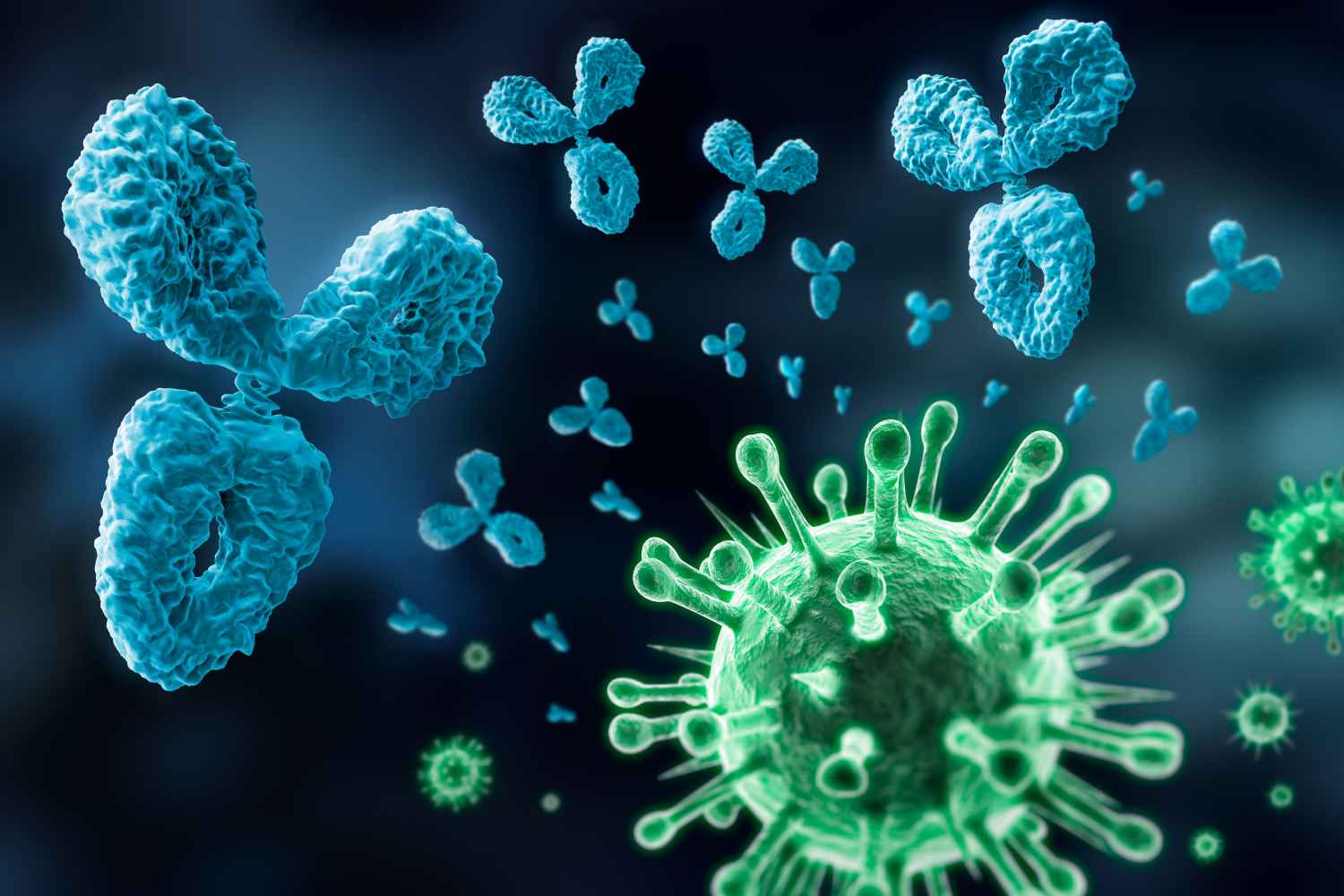SOD1
The protein encoded by this gene binds copper and zinc ions and is one of two isozymes responsible for destroying free superoxide radicals in the body. The encoded isozyme is a soluble cytoplasmic protein, acting as a homodimer to convert naturally-occuring but harmful superoxide radicals to molecular oxygen and hydrogen peroxide. The other isozyme is a mitochondrial protein. Mutations in this gene have been implicated as causes of familial amyotrophic lateral sclerosis. Rare transcript variants have been reported for this gene. [provided by RefSeq, Jul 2008]
Full Name
Superoxide Dismutase 1
Function
Destroys radicals which are normally produced within the cells and which are toxic to biological systems.
Biological Process
Biological Process agingIEA:Ensembl
Biological Process anterograde axonal transportBy SimilarityISS:BHF-UCL
Biological Process apoptotic processIEA:Ensembl
Biological Process auditory receptor cell stereocilium organizationISS:UniProtKB
Biological Process cellular iron ion homeostasisISS:UniProtKB
Biological Process cellular response to ATPIEA:Ensembl
Biological Process cellular response to cadmium ionIEA:Ensembl
Biological Process cellular response to potassium ionIEA:Ensembl
Biological Process ectopic germ cell programmed cell deathIEA:Ensembl
Biological Process embryo implantationISS:UniProtKB
Biological Process glutathione metabolic processISS:UniProtKB
Biological Process heart contractionManual Assertion Based On ExperimentIDA:UniProtKB
Biological Process hydrogen peroxide biosynthetic processManual Assertion Based On ExperimentIDA:UniProtKB
Biological Process locomotory behaviorISS:UniProtKB
Biological Process muscle cell cellular homeostasisISS:UniProtKB
Biological Process myeloid cell homeostasisISS:UniProtKB
Biological Process negative regulation of cholesterol biosynthetic processManual Assertion Based On ExperimentIDA:UniProtKB
Biological Process negative regulation of developmental processIEA:Ensembl
Biological Process negative regulation of inflammatory responseIEA:Ensembl
Biological Process negative regulation of neuron apoptotic processISS:UniProtKB
Biological Process negative regulation of reproductive processIEA:Ensembl
Biological Process neurofilament cytoskeleton organizationISS:UniProtKB
Biological Process ovarian follicle developmentISS:UniProtKB
Biological Process peripheral nervous system myelin maintenanceISS:UniProtKB
Biological Process placenta development1 PublicationNAS:UniProtKB
Biological Process positive regulation of apoptotic process1 PublicationIC:UniProtKB
Biological Process positive regulation of catalytic activityManual Assertion Based On ExperimentIDA:UniProtKB
Biological Process positive regulation of cytokine productionManual Assertion Based On ExperimentIDA:UniProtKB
Biological Process positive regulation of MAPK cascadeISS:UniProtKB
Biological Process positive regulation of oxidative stress-induced intrinsic apoptotic signaling pathwayManual Assertion Based On ExperimentIMP:BHF-UCL
Biological Process positive regulation of phagocytosisIEA:Ensembl
Biological Process positive regulation of superoxide anion generationManual Assertion Based On ExperimentIDA:UniProtKB
Biological Process reactive oxygen species metabolic processManual Assertion Based On ExperimentIDA:UniProtKB
Biological Process regulation of blood pressureISS:UniProtKB
Biological Process regulation of GTPase activityManual Assertion Based On ExperimentIDA:UniProtKB
Biological Process regulation of mitochondrial membrane potentialManual Assertion Based On ExperimentIMP:UniProtKB
Biological Process regulation of multicellular organism growthISS:UniProtKB
Biological Process regulation of organ growth1 PublicationNAS:UniProtKB
Biological Process regulation of protein kinase activityManual Assertion Based On ExperimentIDA:UniProtKB
Biological Process regulation of T cell differentiation in thymus1 PublicationNAS:UniProtKB
Biological Process relaxation of vascular associated smooth muscleISS:UniProtKB
Biological Process removal of superoxide radicalsISS:UniProtKB
Biological Process response to amphetamineIEA:Ensembl
Biological Process response to antibioticIEA:Ensembl
Biological Process response to antipsychotic drugIEA:Ensembl
Biological Process response to axon injuryISS:UniProtKB
Biological Process response to carbon monoxideIEA:Ensembl
Biological Process response to copper ionIEA:Ensembl
Biological Process response to ethanolISS:UniProtKB
Biological Process response to heatISS:UniProtKB
Biological Process response to hydrogen peroxideISS:UniProtKB
Biological Process response to nutrient levelsIEA:Ensembl
Biological Process response to organic substanceManual Assertion Based On ExperimentIDA:UniProtKB
Biological Process response to superoxideManual Assertion Based On ExperimentIDA:UniProtKB
Biological Process response to xenobiotic stimulusIEA:Ensembl
Biological Process retina homeostasisISS:UniProtKB
Biological Process retrograde axonal transportBy SimilarityISS:BHF-UCL
Biological Process sensory perception of soundISS:UniProtKB
Biological Process spermatogenesisISS:UniProtKB
Biological Process superoxide anion generationIEA:Ensembl
Biological Process superoxide metabolic processManual Assertion Based On ExperimentIDA:BHF-UCL
Biological Process thymus development1 PublicationNAS:UniProtKB
Biological Process transmission of nerve impulseISS:UniProtKB
Biological Process anterograde axonal transportBy SimilarityISS:BHF-UCL
Biological Process apoptotic processIEA:Ensembl
Biological Process auditory receptor cell stereocilium organizationISS:UniProtKB
Biological Process cellular iron ion homeostasisISS:UniProtKB
Biological Process cellular response to ATPIEA:Ensembl
Biological Process cellular response to cadmium ionIEA:Ensembl
Biological Process cellular response to potassium ionIEA:Ensembl
Biological Process ectopic germ cell programmed cell deathIEA:Ensembl
Biological Process embryo implantationISS:UniProtKB
Biological Process glutathione metabolic processISS:UniProtKB
Biological Process heart contractionManual Assertion Based On ExperimentIDA:UniProtKB
Biological Process hydrogen peroxide biosynthetic processManual Assertion Based On ExperimentIDA:UniProtKB
Biological Process locomotory behaviorISS:UniProtKB
Biological Process muscle cell cellular homeostasisISS:UniProtKB
Biological Process myeloid cell homeostasisISS:UniProtKB
Biological Process negative regulation of cholesterol biosynthetic processManual Assertion Based On ExperimentIDA:UniProtKB
Biological Process negative regulation of developmental processIEA:Ensembl
Biological Process negative regulation of inflammatory responseIEA:Ensembl
Biological Process negative regulation of neuron apoptotic processISS:UniProtKB
Biological Process negative regulation of reproductive processIEA:Ensembl
Biological Process neurofilament cytoskeleton organizationISS:UniProtKB
Biological Process ovarian follicle developmentISS:UniProtKB
Biological Process peripheral nervous system myelin maintenanceISS:UniProtKB
Biological Process placenta development1 PublicationNAS:UniProtKB
Biological Process positive regulation of apoptotic process1 PublicationIC:UniProtKB
Biological Process positive regulation of catalytic activityManual Assertion Based On ExperimentIDA:UniProtKB
Biological Process positive regulation of cytokine productionManual Assertion Based On ExperimentIDA:UniProtKB
Biological Process positive regulation of MAPK cascadeISS:UniProtKB
Biological Process positive regulation of oxidative stress-induced intrinsic apoptotic signaling pathwayManual Assertion Based On ExperimentIMP:BHF-UCL
Biological Process positive regulation of phagocytosisIEA:Ensembl
Biological Process positive regulation of superoxide anion generationManual Assertion Based On ExperimentIDA:UniProtKB
Biological Process reactive oxygen species metabolic processManual Assertion Based On ExperimentIDA:UniProtKB
Biological Process regulation of blood pressureISS:UniProtKB
Biological Process regulation of GTPase activityManual Assertion Based On ExperimentIDA:UniProtKB
Biological Process regulation of mitochondrial membrane potentialManual Assertion Based On ExperimentIMP:UniProtKB
Biological Process regulation of multicellular organism growthISS:UniProtKB
Biological Process regulation of organ growth1 PublicationNAS:UniProtKB
Biological Process regulation of protein kinase activityManual Assertion Based On ExperimentIDA:UniProtKB
Biological Process regulation of T cell differentiation in thymus1 PublicationNAS:UniProtKB
Biological Process relaxation of vascular associated smooth muscleISS:UniProtKB
Biological Process removal of superoxide radicalsISS:UniProtKB
Biological Process response to amphetamineIEA:Ensembl
Biological Process response to antibioticIEA:Ensembl
Biological Process response to antipsychotic drugIEA:Ensembl
Biological Process response to axon injuryISS:UniProtKB
Biological Process response to carbon monoxideIEA:Ensembl
Biological Process response to copper ionIEA:Ensembl
Biological Process response to ethanolISS:UniProtKB
Biological Process response to heatISS:UniProtKB
Biological Process response to hydrogen peroxideISS:UniProtKB
Biological Process response to nutrient levelsIEA:Ensembl
Biological Process response to organic substanceManual Assertion Based On ExperimentIDA:UniProtKB
Biological Process response to superoxideManual Assertion Based On ExperimentIDA:UniProtKB
Biological Process response to xenobiotic stimulusIEA:Ensembl
Biological Process retina homeostasisISS:UniProtKB
Biological Process retrograde axonal transportBy SimilarityISS:BHF-UCL
Biological Process sensory perception of soundISS:UniProtKB
Biological Process spermatogenesisISS:UniProtKB
Biological Process superoxide anion generationIEA:Ensembl
Biological Process superoxide metabolic processManual Assertion Based On ExperimentIDA:BHF-UCL
Biological Process thymus development1 PublicationNAS:UniProtKB
Biological Process transmission of nerve impulseISS:UniProtKB
Cellular Location
Cytoplasm
Mitochondrion
Nucleus
Predominantly cytoplasmic; the pathogenic variants ALS1 Arg-86 and Ala-94 gradually aggregates and accumulates in mitochondria.
Mitochondrion
Nucleus
Predominantly cytoplasmic; the pathogenic variants ALS1 Arg-86 and Ala-94 gradually aggregates and accumulates in mitochondria.
Involvement in disease
Amyotrophic lateral sclerosis 1 (ALS1):
A neurodegenerative disorder affecting upper motor neurons in the brain and lower motor neurons in the brain stem and spinal cord, resulting in fatal paralysis. Sensory abnormalities are absent. The pathologic hallmarks of the disease include pallor of the corticospinal tract due to loss of motor neurons, presence of ubiquitin-positive inclusions within surviving motor neurons, and deposition of pathologic aggregates. The etiology of amyotrophic lateral sclerosis is likely to be multifactorial, involving both genetic and environmental factors. The disease is inherited in 5-10% of the cases.
Spastic tetraplegia and axial hypotonia, progressive (STAHP):
An autosomal recessive, neurologic disorder characterized by loss of motor abilities in the first year of life, after which severe, progressive spastic tetraparesis develops. Affected individuals have severe axial hypotonia, hyperekplexia, hypertonia, and myokymia, reflecting upper motor neuron involvement. Cognitive development may be affected.
A neurodegenerative disorder affecting upper motor neurons in the brain and lower motor neurons in the brain stem and spinal cord, resulting in fatal paralysis. Sensory abnormalities are absent. The pathologic hallmarks of the disease include pallor of the corticospinal tract due to loss of motor neurons, presence of ubiquitin-positive inclusions within surviving motor neurons, and deposition of pathologic aggregates. The etiology of amyotrophic lateral sclerosis is likely to be multifactorial, involving both genetic and environmental factors. The disease is inherited in 5-10% of the cases.
Spastic tetraplegia and axial hypotonia, progressive (STAHP):
An autosomal recessive, neurologic disorder characterized by loss of motor abilities in the first year of life, after which severe, progressive spastic tetraparesis develops. Affected individuals have severe axial hypotonia, hyperekplexia, hypertonia, and myokymia, reflecting upper motor neuron involvement. Cognitive development may be affected.
PTM
Unlike wild-type protein, the pathogenic variants ALS1 Arg-38, Arg-47, Arg-86 and Ala-94 are polyubiquitinated by RNF19A leading to their proteasomal degradation. The pathogenic variants ALS1 Arg-86 and Ala-94 are ubiquitinated by MARCH5 leading to their proteasomal degradation.
The ditryptophan cross-link at Trp-33 is responsible for the non-disulfide-linked homodimerization. Such modification might only occur in extreme conditions and additional experimental evidence is required.
Palmitoylation helps nuclear targeting and decreases catalytic activity.
Succinylation, adjacent to copper catalytic site, probably inhibits activity. Desuccinylation by SIRT5 enhances activity.
The ditryptophan cross-link at Trp-33 is responsible for the non-disulfide-linked homodimerization. Such modification might only occur in extreme conditions and additional experimental evidence is required.
Palmitoylation helps nuclear targeting and decreases catalytic activity.
Succinylation, adjacent to copper catalytic site, probably inhibits activity. Desuccinylation by SIRT5 enhances activity.
View more
Anti-SOD1 antibodies
+ Filters
 Loading...
Loading...
Target: SOD1
Host: Mouse
Antibody Isotype: IgG1
Specificity: Human
Clone: SOD1
Application*: E, WB
Target: SOD1
Host: Mouse
Antibody Isotype: IgG2a
Specificity: Human
Clone: C4F6
Application*: WB, P, IF
Target: SOD1
Host: Mouse
Antibody Isotype: IgG1
Specificity: Human
Clone: A5C3
Application*: WB, P, IF
Target: SOD1
Host: Mouse
Antibody Isotype: IgG1
Specificity: Human, Mouse
Clone: 6F5
Application*: WB, IF, FC
Target: SOD1
Host: Mouse
Antibody Isotype: IgG2a, κ
Specificity: Human
Clone: 10D5
Application*: WB, E
Target: SOD1
Host: Mouse
Antibody Isotype: IgG1
Specificity: Human
Clone: SOD9
Application*: E, WB
Target: SOD1
Host: Mouse
Antibody Isotype: IgG1
Specificity: Cattle, Human, Mouse
Clone: CBXS-2337
Application*: E, IH
Target: SOD1
Host: Mouse
Specificity: Mouse, Rat, Human
Clone: CBXS-2115
Application*: WB, IP, IF, E
Target: SOD1
Host: Mouse
Antibody Isotype: IgG2a
Specificity: Human
Clone: CBXS-1789
Application*: WB, IC
Target: SOD1
Host: Rabbit
Antibody Isotype: IgG
Specificity: Human
Clone: CBXS-1435
Application*: WB, IP, P, IC, IF
Target: SOD1
Host: Mouse
Antibody Isotype: IgG1
Specificity: Cattle
Clone: CBXS-0635
Application*: E, C, P
Target: SOD1
Host: Mouse
Antibody Isotype: IgG2b
Specificity: Human, Mouse
Clone: CBXS-5273
Application*: IC, IF, P, WB
Target: SOD1
Host: Mouse
Antibody Isotype: IgG1
Specificity: Human, Mouse
Clone: CBXS-5226
Application*: F, IC, IF, WB
Target: SOD1
Host: Mouse
Antibody Isotype: IgG1, κ
Specificity: Human
Clone: CBXS-5220
Application*: WB, F, E, IF
Target: SOD1
Host: Mouse
Antibody Isotype: IgG1, κ
Specificity: Human
Clone: CBXS-5055
Application*: IP
Target: SOD1
Host: Mouse
Antibody Isotype: IgG2a, κ
Specificity: Human
Clone: CBXS-4727
Application*: E, IH, IP, WB
Target: SOD1
Host: Mouse
Antibody Isotype: IgG1
Specificity: Human, Mouse, Cattle
Clone: CBXS-4596
Application*: E, IH, P, C
Target: SOD1
Host: Mouse
Antibody Isotype: IgG2b, κ
Specificity: Human
Clone: CBXS-4209
Application*: E, IH, IP, WB
Target: SOD1
Host: Mouse
Antibody Isotype: IgG2b, κ
Specificity: Human
Clone: CBXS-4081
Application*: IP
Target: SOD1
Host: Mouse
Antibody Isotype: IgG1
Specificity: Human
Clone: CBXS-3732
Application*: E, WB
Target: SOD1
Host: Mouse
Antibody Isotype: IgG2a, κ
Specificity: Human
Clone: CBXS-3617
Application*: E, IF, WB
Target: SOD1
Host: Rabbit
Antibody Isotype: IgG
Specificity: Human
Clone: CBXS-3593
Application*: E, IF, IF
Target: SOD1
Host: Mouse
Specificity: Human
Clone: CBXS-3591
Application*: EC
Target: SOD1
Host: Mouse
Antibody Isotype: IgG1, κ
Specificity: Human
Clone: CBXS-5914
Application*: IP
Target: SOD1
Host: Mouse
Antibody Isotype: IgG1
Specificity: Human
Clone: CBXS-5851
Application*: WB, IP
Target: SOD1
Host: Mouse
Antibody Isotype: IgG1
Specificity: Human
Clone: CBXS-5814
Application*: E, WB
Target: SOD1
Host: Mouse
Antibody Isotype: IgG2a
Specificity: Human
Clone: CBXS-5759
Application*: E, WB
Target: SOD1
Host: Mouse
Antibody Isotype: IgG1, κ
Specificity: Human
Clone: CBXS-5593
Application*: E, WB
Target: SOD1
Host: Mouse
Antibody Isotype: IgG2b
Specificity: Human
Clone: CBXS-3637
Application*: WB, F, IP
Target: SOD1
Host: Rabbit
Antibody Isotype: IgG
Specificity: Human
Clone: CBXS-3599
Application*: F
Target: SOD1
Host: Rabbit
Antibody Isotype: IgG
Specificity: Human
Clone: CBXS-1185
Application*: WB, P
Target: SOD1
Host: Mouse
Antibody Isotype: IgG
Specificity: Rat
Clone: CBYC-A1061
Application*: WB, IC, P, C, E
Target: SOD1
Host: Mouse
Antibody Isotype: IgG
Specificity: Human
Clone: CBYC-A1060
Application*: WB, IC, P, C, E
Target: SOD1
Host: Mouse
Antibody Isotype: IgG
Specificity: Human, Mouse
Clone: 8B10
Application*: IF, IC, P, WB
Target: SOD1
Host: Mouse
Antibody Isotype: IgG1
Specificity: Human
Clone: 72B1
Application*: IP, IC, IF, WB
Target: SOD1
Host: Mouse
Antibody Isotype: IgG1
Specificity: Human, Mouse
Clone: 6F5
Application*: IF, IC, F, WB
Target: SOD1
Host: Rabbit
Antibody Isotype: IgG
Specificity: Human
Clone: 3E5
Application*: E, WB, F
Target: SOD1
Host: Mouse
Antibody Isotype: IgG
Specificity: Human
Clone: 8C4
Application*: E, IF, F
Target: SOD1
Host: Mouse
Antibody Isotype: IgG
Specificity: Human, Mouse
Clone: CBT1149
Application*: WB, IF, IC, F, E
Target: SOD1
Host: Mouse
Antibody Isotype: IgG1
Specificity: Human, Mouse
Clone: CBT2229
Application*: WB, IC, F
More Infomation
Hot products 
-
Mouse Anti-ADAM12 Recombinant Antibody (V2-179752) (CBMAB-A1114-YC)

-
Mouse Anti-AAV-5 Recombinant Antibody (V2-503417) (CBMAB-V208-1369-FY)

-
Mouse Anti-CGAS Recombinant Antibody (CBFYM-0995) (CBMAB-M1146-FY)

-
Mouse Anti-ATM Recombinant Antibody (2C1) (CBMAB-A3970-YC)

-
Mouse Anti-ACTG1 Recombinant Antibody (V2-179597) (CBMAB-A0916-YC)

-
Rat Anti-C5AR1 Recombinant Antibody (8D6) (CBMAB-C9139-LY)

-
Mouse Anti-APCS Recombinant Antibody (CBYC-A663) (CBMAB-A3054-YC)

-
Mouse Anti-dsRNA Recombinant Antibody (2) (CBMAB-D1807-YC)

-
Mouse Anti-APOE Recombinant Antibody (A1) (CBMAB-0078CQ)

-
Mouse Anti-CFL1 (Phospho-Ser3) Recombinant Antibody (CBFYC-1770) (CBMAB-C1832-FY)

-
Mouse Anti-CASQ1 Recombinant Antibody (CBFYC-0863) (CBMAB-C0918-FY)

-
Mouse Anti-CDKL5 Recombinant Antibody (CBFYC-1629) (CBMAB-C1689-FY)

-
Mouse Anti-CFL1 Recombinant Antibody (CBFYC-1771) (CBMAB-C1833-FY)

-
Mouse Anti-CASP7 Recombinant Antibody (10-01-62) (CBMAB-C2005-LY)

-
Mouse Anti-ALOX5 Recombinant Antibody (33) (CBMAB-1890CQ)

-
Rabbit Anti-AP2M1 (Phosphorylated T156) Recombinant Antibody (D4F3) (PTM-CBMAB-0610LY)

-
Mouse Anti-ADIPOR1 Recombinant Antibody (V2-179982) (CBMAB-A1368-YC)

-
Mouse Anti-CIITA Recombinant Antibody (CBLC160-LY) (CBMAB-C10987-LY)

-
Mouse Anti-CD19 Recombinant Antibody (CBXC-1224) (CBMAB-C1491-CQ)

-
Rabbit Anti-ALK (Phosphorylated Y1278) Recombinant Antibody (D59G10) (PTM-CBMAB-0035YC)

For Research Use Only. Not For Clinical Use.
(P): Predicted
* Abbreviations
- AActivation
- AGAgonist
- APApoptosis
- BBlocking
- BABioassay
- BIBioimaging
- CImmunohistochemistry-Frozen Sections
- CIChromatin Immunoprecipitation
- CTCytotoxicity
- CSCostimulation
- DDepletion
- DBDot Blot
- EELISA
- ECELISA(Cap)
- EDELISA(Det)
- ESELISpot
- EMElectron Microscopy
- FFlow Cytometry
- FNFunction Assay
- GSGel Supershift
- IInhibition
- IAEnzyme Immunoassay
- ICImmunocytochemistry
- IDImmunodiffusion
- IEImmunoelectrophoresis
- IFImmunofluorescence
- IGImmunochromatography
- IHImmunohistochemistry
- IMImmunomicroscopy
- IOImmunoassay
- IPImmunoprecipitation
- ISIntracellular Staining for Flow Cytometry
- LALuminex Assay
- LFLateral Flow Immunoassay
- MMicroarray
- MCMass Cytometry/CyTOF
- MDMeDIP
- MSElectrophoretic Mobility Shift Assay
- NNeutralization
- PImmunohistologyp-Paraffin Sections
- PAPeptide Array
- PEPeptide ELISA
- PLProximity Ligation Assay
- RRadioimmunoassay
- SStimulation
- SESandwich ELISA
- SHIn situ hybridization
- TCTissue Culture
- WBWestern Blot

Online Inquiry







